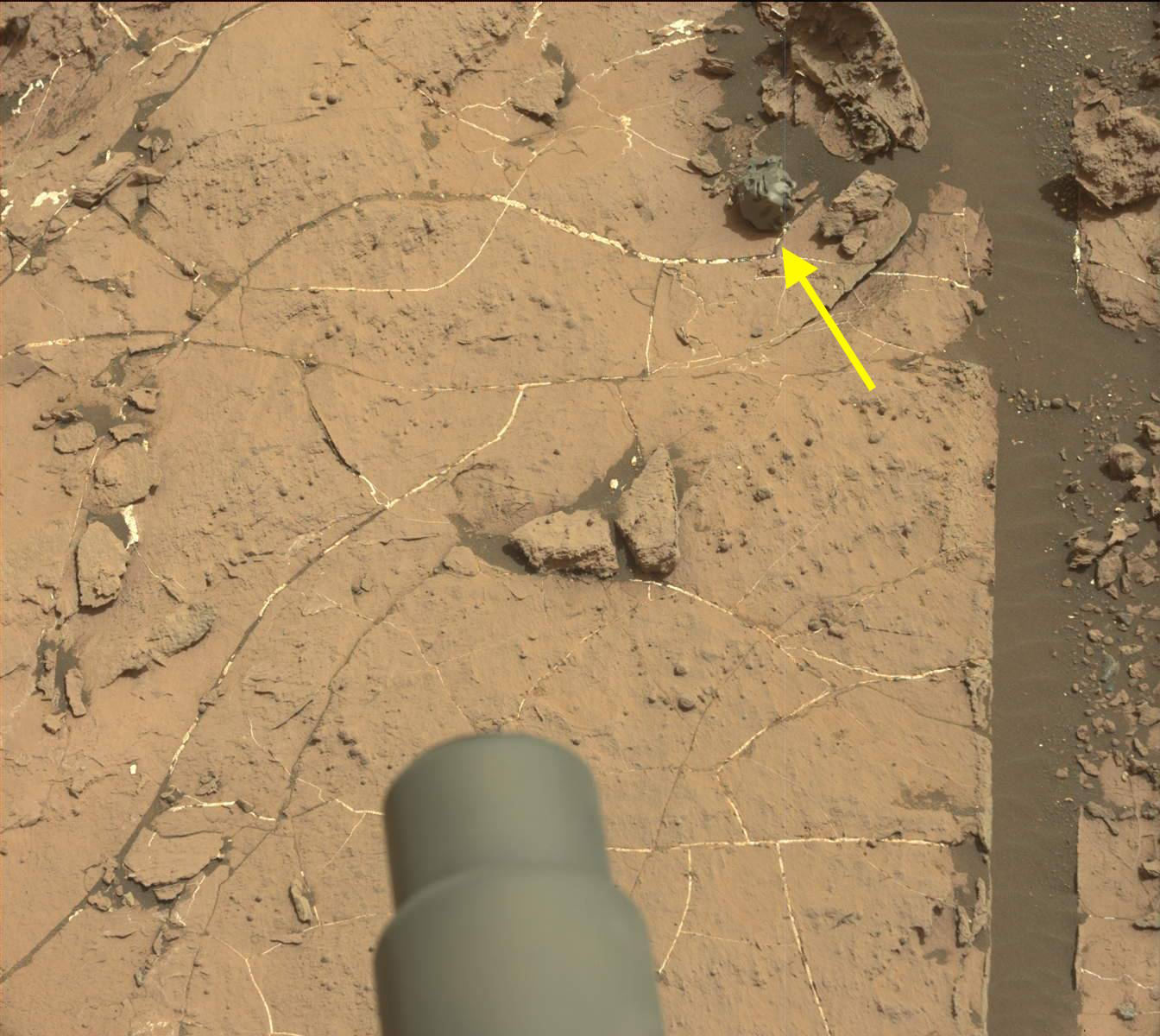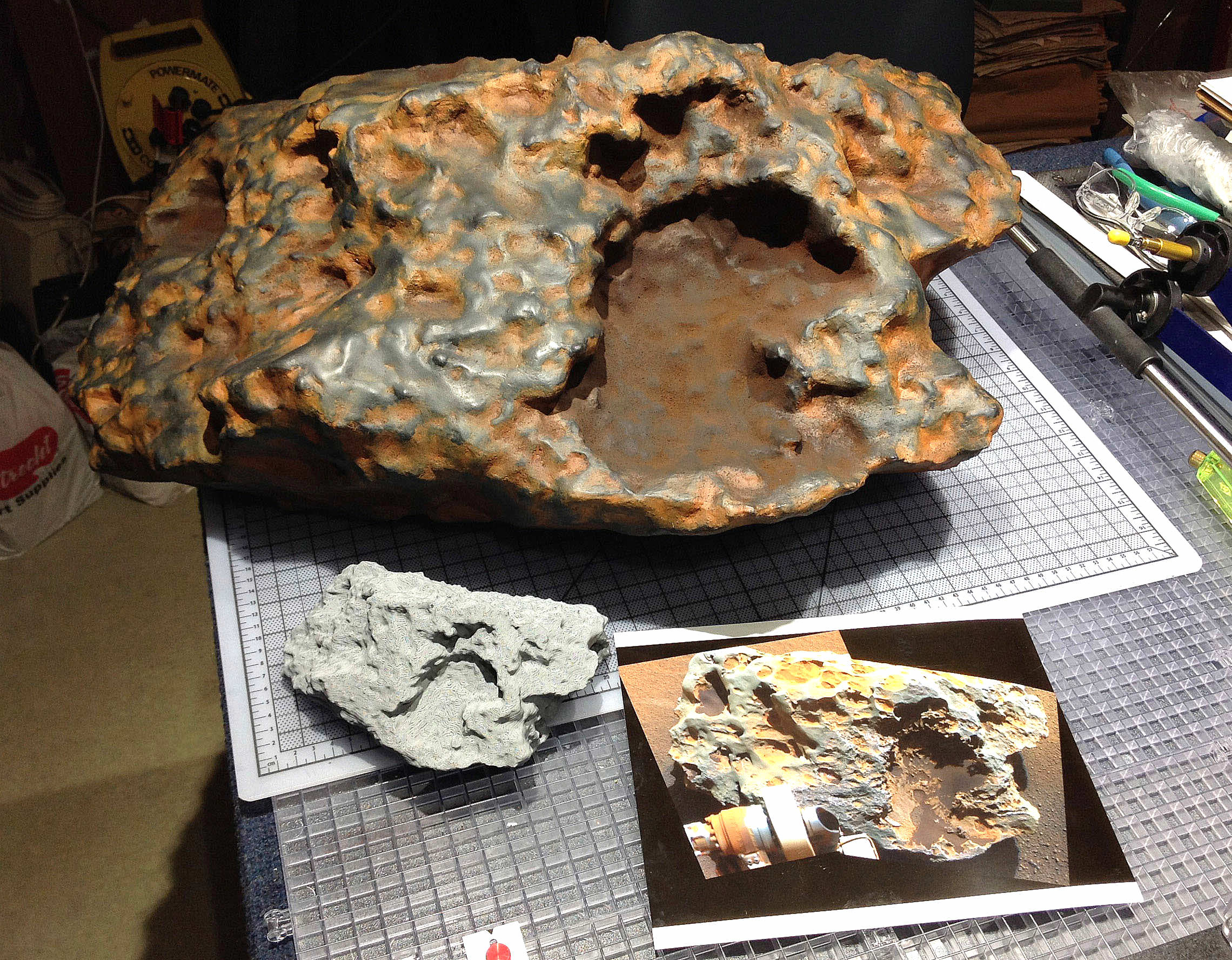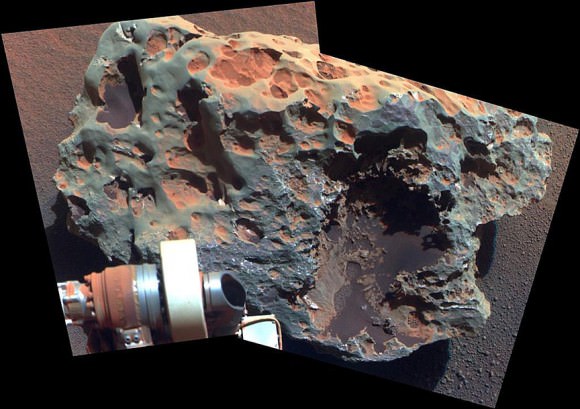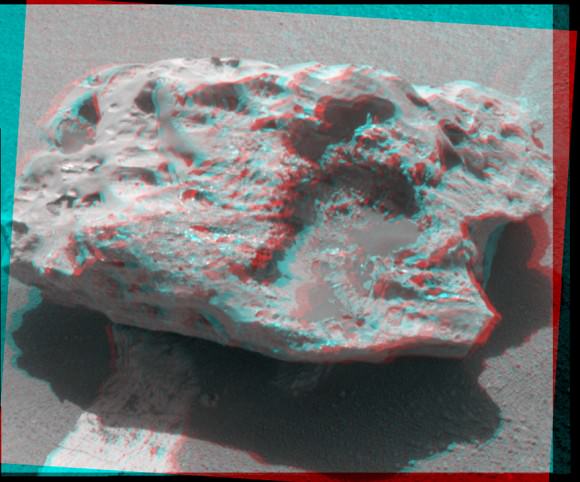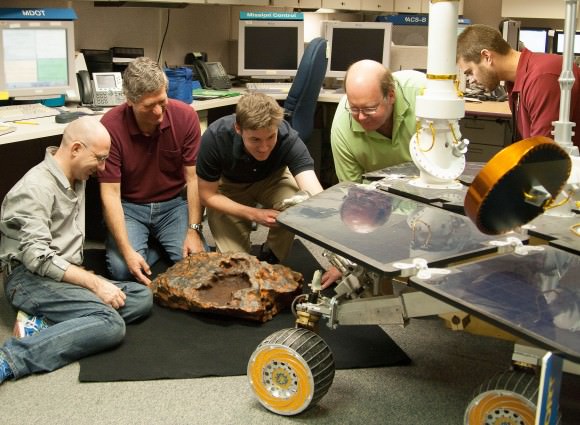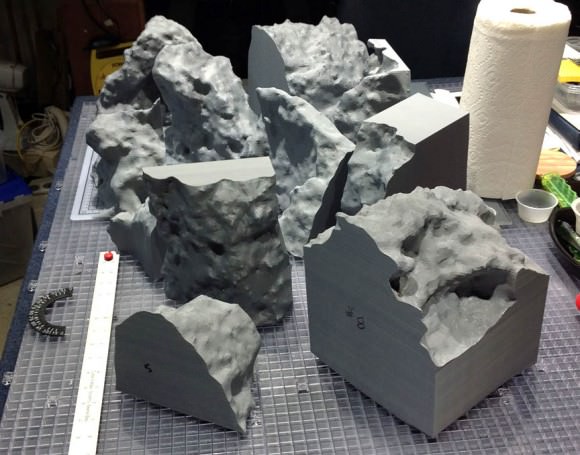Since it landed on the surface of the Red Planet in 2012, the Curiosity rover has made some rather surprising finds. In the past, this has included evidence that liquid water once filled the Gale Crater, the presence of methane and organic molecules today, curious sedimentary formations, and even a strange ball-shaped rock.
And most recently, Curiosity’s Mast Camera (Mastcam) captured images of what appeared to be a ball of melted metal. Known as “Egg Rock” (due to its odd, ovoid appearance) this object has been identified as a small meteorites, most likely composed of nickel and iron.
Egg Rock was first noticed in an image that was snapped by Curiosity on Oct. 28th, 2016, (or Sol 153, the 153rd day of Curiosity’s mission). The rover then snapped a two-frame portrait of the meteorite (seen below) two days later (on Sol 155) and studied it using its ChemCam’s Remote Micro-Imager (RMI). This provided not only a close-up of the strange object, but also a chance for chemical analysis.
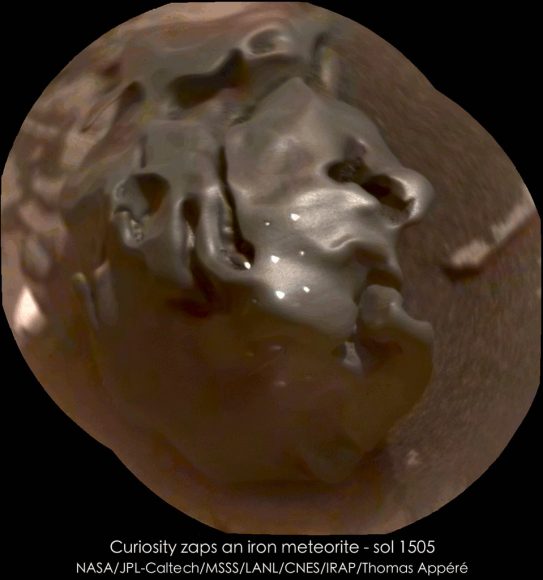
The chemical analysis revealed that the rock was composed of metal, which explained its melted appearance. In essence, it is likely the rock became molten as it entered Mars’ atmosphere, leading to the metal softening and flowing. Once it reached the surface, it cooled to the point that this appearance became frozen on its face.
Such a find is quite exciting, if not entirely unexpected. In the past, Curiosity and other rovers has spotted the remains of other metallic meteorites. For instance, back in 2005, the Opportunity rover spotted a pitted, basketball-sized iron meteorite that was named “Heat Shield Rock“.
This was followed in 2009 by the discovery of “Block Island“, a large dark rock that measured 0.6 meters (2 feet) across and contained large traces of iron. And in 2014, Curiosity spotted the mostly-iron meteorite that came to be known as “Lebanon” which measured 2 meters (6.5 feet) wide – making it the largest meteorite to ever be found on Mars.
However, “Egg Rock” is somewhat unique, in that its appearance seems more “melted” than meteorites spotted in the past. And as George Dvorsky of Gizmodo indicated, other aspects of its appearance (such as the long hollows) could mean that it lost material, perhaps when it still molten (i.e. shortly after it reached the surface).

And such finds are always interesting because they provide us with the opportunity to study chunks of the Solar System that might not survive the trip to Earth. Given its greater proximity to the Asteroid Belt, Mars is better situated to be periodically struck by objects that get kicked out of it by Jupiter’s gravity. In fact, it is theorized that this is how Mars got its moons, Phobos and Deimos.
In addition, meteorites are more likely to survive passing through Mars’ atmosphere, since it is only about 1% as dense as Earth’s. Last, but certainly not least, meteorites have been striking Earth and Mars for eons. But since Mars has had a dry, desiccated atmosphere for all of that time, meteorites that land on its surface are subject to less wind and water erosion.
As such, Martian meteorites are more likely to be intact and better preserved over the long haul. And studying them will give planetary scientists opportunities they may not enjoy here on Earth. Now if we could just transport some of these space rocks home for a more detailed analysis, we’d be in business! Perhaps that should be something for future missions to consider.
Further Reading: ASU – Red Planet Report

